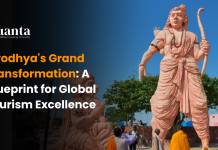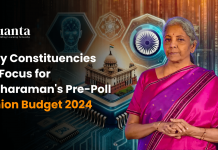What is Article 370?
Included in the Constitution on October 17, 1949, Article 370 exempts J&K from the Indian Constitution (except Article 1 and Article 370 itself) and permits the state to draft its own Constitution. It restricts Parliament’s legislative powers in respect of J&K. For extending a central law on subjects included in the Instrument of Accession (IoA), mere “consultation” with the state government is needed. But for extending it to other matters, “concurrence” of the state government is mandatory. The IoA came into play when the Indian Independence Act, 1947 divided British India into India and Pakistan.
For some 600 princely states whose sovereignty was restored on Independence, the Act provided for three options: to remain an independent country, join Dominion of India, or join Dominion of Pakistan — and this joining with either of the two countries was to be through an IoA. Though no prescribed form was provided, a state so joining could specify the terms on which it agreed to join. The maxim for contracts between states is pacta sunt servanda, i.e. promises between states must be honoured; if there is a breach
of contract, the general rule is that parties are to be restored to the original position.
What were the terms included in the IoA for Kashmir?(Instrument of Accession)
The Schedule appended to the Instrument of Accession gave Parliament the power to legislate in respect of J&K only on Defense, External Affairs and Communications. In Kashmir’s Instrument of Accession in Clause 5, Raja Hari Singh, ruler of J&K, explicitly mentioned that the terms of “my Instrument of Accession cannot be varied by any amendment of the Act or of Indian Independence Act unless such amendment is accepted by me by an Instrument supplementary to this Instrument”. Clause 7 said “nothing in this Instrument shall be deemed to
commit me in any way to acceptance of any future constitution of India or to fetter my discretion to enter into arrangements with the Government of India under any such future constitution”.
How did the accession come about?
Raja Hari Singh had initially decided to remain independent and sign standstill agreements with India and Pakistan, and Pakistan in fact signed it. But following an invasion from tribesmen and Army men in plainclothes from Pakistan, he sought the help of India, which in turn sought the accession of Kashmir to India. Hari Singh signed the Instrument of Accession on October 26, 1947 and Governor General Lord Mountbatten accepted it on October 27, 1947.
It was India’s stated policy that wherever there was a dispute on accession, it should be settled in accordance with the wishes of people rather than a unilateral decision of the ruler of the princely state. In India’s acceptance of the IoA, Lord Mountbatten stated that “it is my Government’s wish that as soon as law and order have been restored in Kashmir and her soil is cleared of the invader, the question of the State’s accession be settled by a reference to the people”.
India regarded accession as purely temporary and provisional, as stated in the Government of India’s White Paper on J&K in 1948. In a letter to J&K Prime Minister Sheikh Abdullah dated May 17, 1949, Prime Minister Jawaharlal Nehru with the concurrence of Vallabhbhai Patel and N Gopalaswami Ayyangar wrote: “It has been settled policy of Government of India, which on many occasions has been stated both by Sardar Patel and me, that the Constitution of Jammu and Kashmir is a matter for determination by the people of the state represented in a Constituent Assembly convened for the purpose.”
Was Article 370 a temporary provision?
It is the first article of Part XXI of the Constitution. The heading of this part is ‘Temporary, Transitional and Special Provisions’. Article 370 could be interpreted as temporary in the sense that the J&K Constituent Assembly had a right to modify/delete/retain it; it decided to retain it, or temporary in the actual sense. There are different opinions on this.
Can Article 370 be deleted?
Yes, Article 370(3) permits deletion by a Presidential Order. Such an order, however, is to be preceded by the concurrence of J&K’s Constituent Assembly. Since such an Assembly was dissolved on January 26, 1957, one view is it cannot be deleted anymore. But the other view is that it can be done, but only with the concurrence of the State
Assembly.
What is Article 370’s significance for the Indian Union?
Article 370 itself mentions Article 1, which includes J&K in the list of states. Article 370 has been described as a tunnel through which the Constitution is applied to J&K. Nehru, however, said in Lok Sabha on November 27, 1963 that “Article 370 has eroded”. India has used Article 370 at least 45 times to extend provisions of the Indian Constitution to J&K. This is the only way through which, by mere Presidential Orders, India has almost nullified the effect of J&K’s special status. By the 1954 order,
almost the entire Constitution was extended to J&K including most Constitutional amendments.
Ninety-four of 97 entries in the Union List are applicable to J&K; 26 out of 47 items of the Concurrent
List have been extended.; 260 of 395 Articles have been extended to the state, besides 7 of 12
Schedules.(before the abrogation, obviously)
What is Article 35A?
Article 35A stems from Article 370, having been introduced through a Presidential Order in 1954. Article 35A is unique in the sense that it does not appear in the main body of the Constitution — Article 35 is immediately followed by Article 36 — but comes up in Appendix I. Article 35A empowers the J&K legislature to define the state’s permanent residents and their special rights and privileges.
What’s changed in Jammu and Kashmir?
Has Article 370 been scrapped?
The Constitution (Application to Jammu and Kashmir) Order, 2019, issued by President Ram Nath Kovind “in exercise of the powers conferred by Clause (1) of Article 370 of the Constitution”, has not abrogated Article 370. While this provision remains in the statute book, it has been used to withdraw the special status of Jammu and Kashmir.
The Presidential Order has extended all provisions of the Indian Constitution to Jammu and Kashmir. It has also ordered that references to the Sadr-i-Riyasat of Jammu and Kashmir shall be construed as references to the Governor of the state, and “references to the Government of the said State shall be construed as including references to the Governor of Jammu and Kashmir acting on the advice of his Council of Ministers”.
This is the first time that Article 370 has been used to amend Article 367 (which deals with Interpretation) in respect of Jammu and Kashmir, and this amendment has then been used to amend Article 370 itself.
What is the status of Article 35A now?
Article 35A stems from Article 370, and was introduced through a Presidential Order in 1954. Article 35A does not appear in the main body of the Constitution — Article 35 is followed by Article 36 — but appears in Appendix I. Article 35A empowers the Jammu and Kashmir legislature to define the permanent residents of the state, and their special rights and privileges.
Presidential Order has extended all provisions of the Constitution to Jammu and Kashmir, including the chapter on Fundamental Rights. Therefore, the discriminatory provisions under Article 35A are now unconstitutional. The President may also withdraw Article 35A. This provision is currently under challenge in the Supreme Court on the ground that it could have been introduced in the Indian Constitution only through a constitutional amendment under Article 368, and not through a Presidential Order under Article 370.
However, Monday’s Presidential Order, too has amended Article 367 without following the amending process.
In effect, the state of Jammu and Kashmir will now cease to exist; it will be replaced by two new Union Territories: Jammu and Kashmir, and Ladakh. UTs have become states earlier; this is the first time that a state has been converted into a UT. The UT of Jammu and Kashmir will have an Assembly, like in Delhi and Puducherry.
Article 3 of the Constitution gives Parliament the power to amend the Constitution by a simple majority to change the boundaries of a state, and to form a new state. But this change requires that such a Bill be first referred to the concerned state Assembly by the President for ascertaining its views. Explanation II of Article 3 says Parliament’s power extends to forming Union Territories.
Not only has Jammu and Kashmir lost its special status, it has been given a status lower than that of other states. Instead of 29, India will now have 28 states. Kashmir will no longer have a Governor, rather a Lieutenant Governor like in Delhi or Puducherry.It is also likely that corporates and individuals will be able to buy land in Jammu and Kashmir. Non-Kashmiris might now get jobs in Kashmir.
Why didn’t governments before this take such a step?
Nehru probably lacked the political will, and wanted to honour the constitutional pact with Maharaja Hari Singh. He also had a sentimental connection with Kashmir. Atal Bihari Vajpayee’s idea was that of the healing touch — in the form of Kashmiriyat, Insaniyat and Jamhooriyat. The first Modi government was in an alliance with the PDP in Jammu and Kashmir till 2018. The Home Minister has said that once peace returns and the situation improves, the government will restore statehood to Jammu and Kashmir.
What has happened since the abrogation?
The Internet shutdown in the J&K U.T. between August 4, 2019 and March 4, 2020 was the longest in any democracy. Even after the shutdown ended, only 2G and broadband Internet were restored.
4G internet was just restored a week ago, after 551 days.
Tourism was in complete shambles, number of tourists reduced by 80 percent over the previous year.
Unemployment reached an all time high of 22 percent
According to the South Asia Terrorism Portal (SATP), the lockdown and increase in Army presence led to a decrease in terrorism-related deaths. Yet
the fatalities post-lockdown were higher compared to the low levels seen in
2012.
Terrorism fatalities did reduce by 50 percent(till 5 Aug 2020, latest figures
not available), but that needs to be seen in context with the unusually high
army cover.
Despite the decrease in terrorism-related deaths, the number of local recruits increased. In 2020, until March, 87.5% of the militants killed were locals according to SATP.
District Development Council Elections, December 2020
The District Development Council (DDC) polls were the first major elections held in the Union territory (UT) of Jammu and Kashmir after the Narendra Modi government last year scrapped the erstwhile state’s semi-autonomous status and divided it into two separate UTs: J&K and Ladakh.
While the BJP is celebrating the fact that it is the single largest party with 75 wins, the PAGD has finished as the largest pre-poll alliance with 110 wins. Independents have won 50.
PAGD: People’s Alliance for Gupkar declaration: an alliance of opposition parties led by National Conference leader Dr Farooq Abdullah. Other parties in the alliance include Mehbooba Mufti led PDP, INC, and a few other(not so important ones)
PS: Abdullah, Mufti and all other major political Kashmiri leaders were placed under house arrest for more than a year under the draconian Public Safety Act(PSA), they were only released before the elections were announced.
Has the BJP made gains in the Kashmir region after the nullification of Article 370?
That Jammu and Kashmir’s politics has been polarised around its religious
geography is known. With the NC-PDP and other smaller parties coming
together against the BJP, the overall outcome in these elections was not
surprising. The only question worth asking is: has the BJP been able to gain
political ground in the Kashmir region by championing the Union
government’s decision to take away the erstwhile state’s autonomy and
making it into a UT, which it has said will lead to more development? While
the BJP is highlighting the fact that it has won three seats in these elections
in the Kashmir region, this cannot be compared to a win in assembly or Lok
Sabha elections because DDC segments are much smaller. Because the DDC polls have been held for the first time, no comparisons can be made with previous elections.
To structure your CAT online preparation in an efficient way consider joining iQuanta which is a top online cat coaching institute and being a part of the iQuanta CAT 22 Course.
You can also check out and be a part of their Facebook group for peer learning, doubt solving and free material.
For 24*7 doubts-solving, FREE guidance and counselling and peer to peer learning, join the CAT preparation Fb group below:






